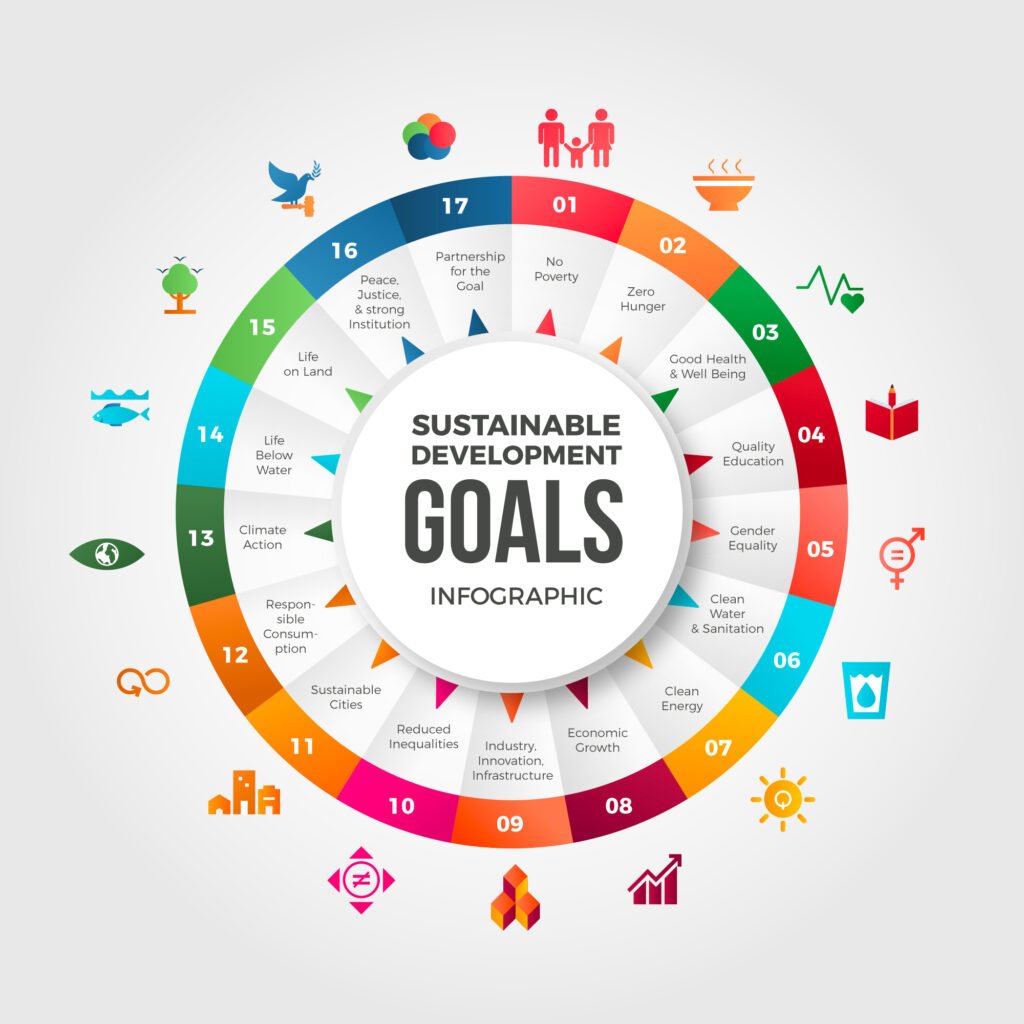Mission Statement
Our mission is to achieve sustainable development goals ( SDGs) of poverty alleviation, food security, hunger reduction, sustainable economic growth by utilizing Barren land/Waste Land/ Unproductive Land and Brackish water. Brackish Water Fisheries and aquaculture initiatives provide an essential lifeline for impoverished communities. By establishing sustainable fish farms and fisheries management systems, these projects ensure a consistent source of protein-rich food, offering nutrition, livelihood and economic opportunities for those most in need. These efforts not only alleviate hunger but also empower communities to break the cycle of poverty while promoting responsible resource management for a more sustainable future.

The Sustainable Development Goals (SDGs)
Sustainable development goals ( SDGs) have ramifications for various industries, including fish farming and aquaculture. Aquaculture is farming of aquatic organisms such as fish and shellfish, which are essential for food production, nutrition, and economic development. The SDGs can guide and enlighten sustainable aquaculture operations. Here are some examples of how fish farming is related to the SDGs:
- Goal 1: No Poverty: Aquaculture can generate money for coastal communities and small-scale fish farmers, thus contributing to poverty reduction and economic development. It also promotes good jobs and employment in rural and coastal areas.
- Goal 2: Zero Hunger: Sustainable and responsible fish farming helps to provide food security by providing a high-quality protein source. It helps meet the increased demand for seafood while reducing strain on wild fish supplies, which aids efforts to eradicate hunger.
- Goal 3: Good Health or Well-Being: Fish is an great source of protein, omega-3 fatty acids, and minerals. Sustainable aquaculture can improve nutrition and general health by increasing access to nutritious seafood.
- Goal 4: Gender Equality: Women are essential in small-scale aquaculture. Women’s economic prospects and decision-making authority can be increased by empowering them in fish farming.
- Goal 5: Clean Water and Sanitation: Responsible aquaculture practices include water management and pollution control to maintain the sustainability of aquatic ecosystems. This is consistent with the goal of safe drinking water and sanitation.
- Goal 6: Fair Work and Economic Growth: Aquaculture can generate revenue for coastal communities and small-scale fish farmers, reducing poverty and economic development. It also promotes good jobs and employment in rural and coastal areas.
- Goal 7: Responsible Consumption and Production: To match responsible consumption and production patterns, sustainable aquaculture methods attempt to reduce resource use, minimize waste, and implement eco-friendly technologies.
- Goal 8: Climate Action: Climate change can impact aquaculture, but it also has the potential to contribute to climate resilience. Sustainable aquaculture techniques can aid in adaptation to climate change and reduce greenhouse gas emissions.
- Goal 9: Life Below Water: Sustainable aquaculture methods are critical for marine ecosystem protection. It helps to decrease overfishing and the harmful effects of fishing on the oceans. Responsible aquaculture can aid in the preservation of marine biodiversity and ecosystems.
- Goal 10: Partnerships for the Goals: Collaboration among governments, the commercial sector, research institutions, and civil society is essential for long-term aquaculture sustainability. Partnerships are critical for promoting responsible practices, knowledge sharing, and capacity building.
It is crucial to emphasize that aquaculture can positively contribute to many SDGs. As a result, adopting sustainable and ethical fish farming practices is critical to maximizing contributions to the SDGs while limiting negative impacts. To help attain these aims, international organizations, governments, and industry players frequently collaborate to set guidelines and standards for sustainable aquaculture.
